|
Autobiography -
Cozzetti & Gemmill
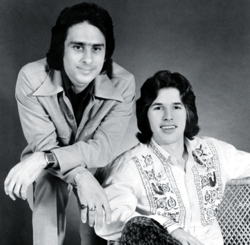 Bob Cozzetti and I met my senior year in high school ('67)when I was playing
tenor saxophone & flute in the
Jimmy Hanna Big Band. Bob was responsible for me being in the band. He and
Jim Ogilvy (stage name; Jimmy Hanna) were friends, having grown up together on Capital Hill.
Bob was mostly trained on trumpet; self taught on piano. His most
notable teachers were the late
Roy Cummings and Mark Doubleday; lead trumpet man in
The Dynamics (famous Northwest dance band). I attended the
Long Beach State College Stage Band Camp in '65 and was
exposed to some great jazz artists; bassist
Ralph Pena and pianist
Toshiko Mariano.
My favorite saxophone teachers were Jordan Ruwe and Jabba Ward (of Seattle). I also spent time with
David Friesen,
studying musical concepts, etc.
Bob Cozzetti and I met my senior year in high school ('67)when I was playing
tenor saxophone & flute in the
Jimmy Hanna Big Band. Bob was responsible for me being in the band. He and
Jim Ogilvy (stage name; Jimmy Hanna) were friends, having grown up together on Capital Hill.
Bob was mostly trained on trumpet; self taught on piano. His most
notable teachers were the late
Roy Cummings and Mark Doubleday; lead trumpet man in
The Dynamics (famous Northwest dance band). I attended the
Long Beach State College Stage Band Camp in '65 and was
exposed to some great jazz artists; bassist
Ralph Pena and pianist
Toshiko Mariano.
My favorite saxophone teachers were Jordan Ruwe and Jabba Ward (of Seattle). I also spent time with
David Friesen,
studying musical concepts, etc.
We began to practice our horns together and study music theory. Bob was very much into
Miles Davis
(at that time) and had a good ear (a sweet tone on his trumpet). I had a lot of formal training (attended Long Beach State
College Stage Band Camp in '65) and was exposed to excellent sax teachers (Roy Kennelly, Jordan Ruwe, Jabbo Ward, etc.).
I tried to help further Bob's knowledge of scales, chordal progressions and musical ideas. We could jam almost any night
at an after-hours club in the University District (the Queequeg), run by pianist/bassist Jerry Heldman: and we did a lot of
jamming. It was quite the experience; sitting in on our instruments in front of a live audience.
Larry Coryell,
McCoy Tyner,
the Adderley brothers (Cannonball &
Nat)
and other jazz legends, in town (usually appearing at the
Penthouse),
sat in at the Queequeg (later named the Llahngaelhyn). This was a very good time for music in the Seattle area.
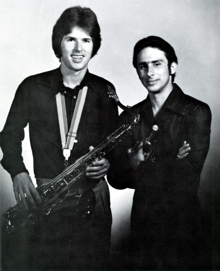 In 1968, Bob and I began to combine our talents as a trumpet, flute & saxophone section for hire. We spent a year in Los Angeles
playing with various rock & roll bands, then moved to Boston, Massachusetts (so we could check out the
Berklee College
of Music). While in Boston, we played with different bands (mostly rhythm & blues). One such group, led by a fellow
'nicknamed' Shorty (leader and vocalist) was anything but ordinary. He would do full body flips on stage, as part of his act.
It was always entertaining, but not the type of group we were looking for. After a few months, we returned home to Seattle.
In 1968, Bob and I began to combine our talents as a trumpet, flute & saxophone section for hire. We spent a year in Los Angeles
playing with various rock & roll bands, then moved to Boston, Massachusetts (so we could check out the
Berklee College
of Music). While in Boston, we played with different bands (mostly rhythm & blues). One such group, led by a fellow
'nicknamed' Shorty (leader and vocalist) was anything but ordinary. He would do full body flips on stage, as part of his act.
It was always entertaining, but not the type of group we were looking for. After a few months, we returned home to Seattle.
Now back in town, Bob and I helped form an avant-garde six-piece jazz orchestra; Cosmic Revolution Jazz Sextet. We had
wanted, for some time, to get away from the rock & R&B scene and get back to our roots. In this particular group, Bob was now
performing on the acoustic piano, rather than trumpet. Although we had both studied piano for years, this was the first time
either of us had performed on it in public. One of the reasons for this was that we had invited a friend (Charles Jefferson)
to play trumpet. Charles was a classical trumpeter, whom had taken an interest in jazz. It was fun to see him adjust his technique
to the more flowing and open intricacies of innovative music. Steve Swartz was our drummer (it should be noted that we already
knew Steve from our earlier days at the Queequeg), Mike Jacobsen was brought on board to play cello and Pete Leinonen
was our standup bassist. Of all our groups, this was, by far, the most unusual. We had a enjoyable time writing, arranging and
performing (mostly outdoor concerts) with CRJS.
The Cosmic Revolution Jazz Sextet was an educational experience for sure, but it did not last long. Bob, I and Steve soon had an
opportunity to join a newly formed band;
Ron Holden &
Good News. Ron was a talented song writer, vocalist & showman, who had a following from his 1959 hit song
'Love You So', which became an
international Top-10 hit, selling over one million records (according to Ron). The group was a mixture of rock 'n' roll and
rhythm & blues; sort of
like Taj Mahal,
James Brown,
Chicago &
Blood, Sweat & Tears, with some original material
by us to keep things interesting. Gary Snyder (electric bass) was the bass man with
Jimmy Hanna’s Dynamics (famous Seattle rock band). Gary brought with him vast experience and a unique style of play.
Toby Cyer (electric guitar) was also quite gifted; a cross between Hendrix and
Peter Frampton.
Steve Swartz (drums & percussion) was simply excellent. Ron Holden & Good News exhibited a camaraderie amongst the
musicians that was rare, making our time together rewarding (about eight months).
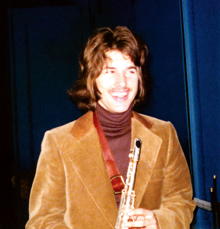 In early 1970, we (including Steve Swartz) opted for a more simple approach and formed a three-piece jazz/fusion group;
Music Projection Trio. This collaboration (with no bass player) would come to be a learning experience for us. The absence of bass
(and rotating between trumpet, saxophone & keyboards), gave us a sound all our own. It is worth mentioning, that Bob had become
friends with
Mr. Harold Rhodes (inventor of the Fender-Rhodes electric piano). Harold, motivated by our situation (no bass), helped
solve this little problem by enhancing the lower range of the instrument. As a result; we were able to play full-bodied bass lines
with our left hand and solos, chords, etc., with our right. We never did use a bass player in this jazz trio. In October '70, we were asked to perform as an opening act for
Herbie Hancock
and his sextet at the Ebonee Club (1214 Pike Street) by promoter and saxophonist
Joe Brazil. I had played
tenor saxophone (with Joe on alto) in an innovative large orchestra; the James Gardner Jazz Orchestra. James Gardner was a
trombonist and composer (his arrangments were similar to
Oliver Nelson).
Getting back to Joe; we appreciated the opportunity to exhibit our talents (MPT) with such a prominant artist as Herbie
(he actually gave BC a piano lesson before our gig).
Billy Hart (the drummer)
told us he really liked our group. A month later, we performed at the Jazz Ragtime Festival with
Ramsey Lewis, the late
John Lee Hooker, the late
Jo Jordan and the late
Eubie Blake.
In early 1970, we (including Steve Swartz) opted for a more simple approach and formed a three-piece jazz/fusion group;
Music Projection Trio. This collaboration (with no bass player) would come to be a learning experience for us. The absence of bass
(and rotating between trumpet, saxophone & keyboards), gave us a sound all our own. It is worth mentioning, that Bob had become
friends with
Mr. Harold Rhodes (inventor of the Fender-Rhodes electric piano). Harold, motivated by our situation (no bass), helped
solve this little problem by enhancing the lower range of the instrument. As a result; we were able to play full-bodied bass lines
with our left hand and solos, chords, etc., with our right. We never did use a bass player in this jazz trio. In October '70, we were asked to perform as an opening act for
Herbie Hancock
and his sextet at the Ebonee Club (1214 Pike Street) by promoter and saxophonist
Joe Brazil. I had played
tenor saxophone (with Joe on alto) in an innovative large orchestra; the James Gardner Jazz Orchestra. James Gardner was a
trombonist and composer (his arrangments were similar to
Oliver Nelson).
Getting back to Joe; we appreciated the opportunity to exhibit our talents (MPT) with such a prominant artist as Herbie
(he actually gave BC a piano lesson before our gig).
Billy Hart (the drummer)
told us he really liked our group. A month later, we performed at the Jazz Ragtime Festival with
Ramsey Lewis, the late
John Lee Hooker, the late
Jo Jordan and the late
Eubie Blake.
In June 1971, we appeared at a promotional event for the opening of the film
Le Mans, starring
Steve McQueen.
This concert took place in the parking lot at the 7th Avenue Theater (with sixty new and exotic Porsches) in downtown Seattle.
In August, we performed at the
Seattle Center Mural
Amphitheatre; event called Rock Kaleidoscope, sponsored by the city of Seattle and Mayor
Wes Uhlman.
We did a lot of concerts for the city of Seattle. We received a letter from the Mayor in September '71, thanking us
for all the work we did performing (mostly for free). We always loved doing outdoor concerts for large crowds. Fun in the sun.
Even more significant (May 1972), was our gig with
Charles Lloyd
and his quartet at the Fresh Air Tavern (Seattle). Performing for an entire week with Charles Lloyd was quite the experience (one I will
never forget). He would stand at the side of the stage (while we played) and just listen. He never said anything, but I know he approved
of the music. I got nothing but good vibes from him. We improvised a lot and only performed our own material. That was our way. Bob
and I took turns being out front; him on his trumpet and me on my saxophones. We got a lot of music out just three instruments (horn,
keyboards & drums). As with Herbie (Hancock), I think Charles found Music Projection Trio to be uniquely interesting. Steve was a really
good drummer (kept a solid beat, etc.).
In September 1972, we (Music Projection Trio) ventured back east, again (this time with Steve), settling in Hackensack, New Jersey.
Our intent, was to be as close to the city (New York City), as possible. NYC (especially, Manhattan) was 'the place' for jazz. Bob
and I wanted to learn from the masters. Fortunately, we got our wish, as we were soon able to perform at clubs and concerts all over
the area; venues like
Kenny’s Castaways (where we opened for Mongo Santamaria's Latin Big Band), the
Mercer Arts Center (some really wild bands performed in the Rock Room; the
New York Dolls
&
Blondie), the
United Nations
Concert Hall (in front of delegates),
Columbia and
Princeton
Universities, etc. We also were around some great jazz musicians;
Albert Daley (traded sets
with his group at the Mercer Arts Center in the Blue Room and
Sam Rivers (Bob used to hang out
with Sam at clubs; such as the
Village Vanguard).
I tried to get a saxophone lesson from
Joe Henderson (didn't
work out for me; Joe was one serious dude). However, the most significant time of our stay occurred when we stumbled upon Topper
Schroeder. He was the artist/relations manager for Milestone Records (later, RCA RECORDS). At this time, he was handling some
of the most popular artists alive;
Elvis,
John Denver,
David Bowie, etc.
So, when Topper talked, we listened. He took a special interest in our music right away, soon after hearing us perform at a jazz club.
He would offer helpful constructive comments about how we could improve and was solely responsible for changing our name to
Rorschach. Topper was of the opinion that our music (jazz, jazz-rock, new age, etc.) could be interpreted differently by different
people in the audience. Thus, your
Rorschach
test. Our time with Mr. Schroeder was crucial to our career. We should also mention that Topper was one great chef. He was often
referred to as the galloping gourmet of RCA. I remember us having dinner at his condo, on Park Avenue (Manhattan), with
Todd Rundgren. After a while,
though, we traveled, once again, back to Seattle (as Rorschach) and began performing at clubs and concerts.
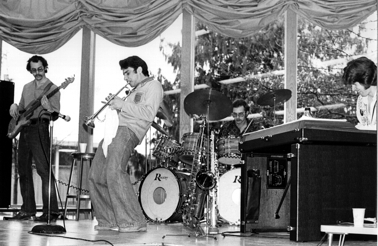 Steve had left Rorschach in New Jersey,
so we had to find a new drummer. It was during this period, that we began to experiment with different musicians. We also decided
to become a jazz quartet. Our bass players were Jeff Fiorini, Bruce Phares or
Steve Bartlett. Our favorite drum and percussionist was
Fred Taylor
(Bob Merrihew played with us later on; Soft Flower in Spring). Bartlett and Taylor just seemed to fit the best with
us at that time. We had good chemistry together and everybody knew what to do. You can't really teach somebody how to innovate or
develop a style all their own. They either feel it (the music) or they don't. We never used charts, so you were pretty much on your
own with us. Sometimes, we just agreed on a key and that was it; we were off and running. One significant event worth mentioning
was an appearance by Rorschach on May 22, 1976 with the legendary jazz guitarist
Larry Coryell
at Bellevue Jazz Festival (Bellevue, Washington). It should be noted, that Bruce Phares and Fred Taylor played with us at this
festival. Once again, though, we decided to travel back to Hackensack, New Jersey. We also spent some time in Arvada, Colorado along
the trek east; played at some jazz clubs and did a concert at the
University of Denver. Steve had left Rorschach in New Jersey,
so we had to find a new drummer. It was during this period, that we began to experiment with different musicians. We also decided
to become a jazz quartet. Our bass players were Jeff Fiorini, Bruce Phares or
Steve Bartlett. Our favorite drum and percussionist was
Fred Taylor
(Bob Merrihew played with us later on; Soft Flower in Spring). Bartlett and Taylor just seemed to fit the best with
us at that time. We had good chemistry together and everybody knew what to do. You can't really teach somebody how to innovate or
develop a style all their own. They either feel it (the music) or they don't. We never used charts, so you were pretty much on your
own with us. Sometimes, we just agreed on a key and that was it; we were off and running. One significant event worth mentioning
was an appearance by Rorschach on May 22, 1976 with the legendary jazz guitarist
Larry Coryell
at Bellevue Jazz Festival (Bellevue, Washington). It should be noted, that Bruce Phares and Fred Taylor played with us at this
festival. Once again, though, we decided to travel back to Hackensack, New Jersey. We also spent some time in Arvada, Colorado along
the trek east; played at some jazz clubs and did a concert at the
University of Denver.
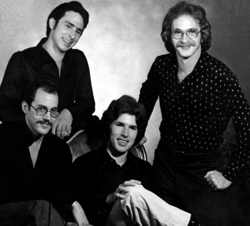 Bob and I found
Midge Pike playing
stand-up bass in a French restaurant, in Manhattan. Midge could play any song in any key, without the sheet music; a phenomenal
musician who had complete command of his instrument. And a nice person too. He had played with some great saxophonists;
Jackie McLean,
Albert Ayler
&
Paul Winter.
Midge told us he had worked with Miles Davis. We hit it off right from the start and he was soon playing bass in our group
(Rorschach). We also had Bruce Jackson or Wes Jensen performing on drums with us. Bob and I were writing new material
and booking gigs. Things were good; lots of music. In May 1977, we were invited to perform at an outdoor concert series put on at
Lincoln Center. Midge (bass) and Bruce Jackson (drums) played with us on this gig, which reviewer Dick Murphy briefly
mentioned in a June 1, 1977 writeup in his column And All That Jazz. We also performed at
The Bitter End (famous night club) and
United Nations (in front of the delegates). We also took part in a summer concert series (Brooklyn) at the Brooklyn
Museum's Theater in the Back. After the summer concerts were over, we returned to Seattle.
A highlight of our return in January 1978, was appearing at
Parnell's
in Pioneer Square, Seattle (a well-known night club). Fred Taylor and Steve Bartlett played with us at Parnell's. We made a
decision to begin using our own names; the Cozzetti & Gemmill Quartet. Later (1983), we dropped
the quartet and just went with Cozzetti & Gemmill.
However; there are people out there that still refer to us as Rorschach.
Bob and I found
Midge Pike playing
stand-up bass in a French restaurant, in Manhattan. Midge could play any song in any key, without the sheet music; a phenomenal
musician who had complete command of his instrument. And a nice person too. He had played with some great saxophonists;
Jackie McLean,
Albert Ayler
&
Paul Winter.
Midge told us he had worked with Miles Davis. We hit it off right from the start and he was soon playing bass in our group
(Rorschach). We also had Bruce Jackson or Wes Jensen performing on drums with us. Bob and I were writing new material
and booking gigs. Things were good; lots of music. In May 1977, we were invited to perform at an outdoor concert series put on at
Lincoln Center. Midge (bass) and Bruce Jackson (drums) played with us on this gig, which reviewer Dick Murphy briefly
mentioned in a June 1, 1977 writeup in his column And All That Jazz. We also performed at
The Bitter End (famous night club) and
United Nations (in front of the delegates). We also took part in a summer concert series (Brooklyn) at the Brooklyn
Museum's Theater in the Back. After the summer concerts were over, we returned to Seattle.
A highlight of our return in January 1978, was appearing at
Parnell's
in Pioneer Square, Seattle (a well-known night club). Fred Taylor and Steve Bartlett played with us at Parnell's. We made a
decision to begin using our own names; the Cozzetti & Gemmill Quartet. Later (1983), we dropped
the quartet and just went with Cozzetti & Gemmill.
However; there are people out there that still refer to us as Rorschach.
Discography
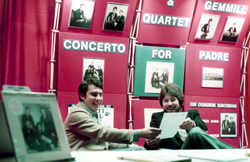 Concerto For Padré (1981) was our first album (on vinyl). It was released under our
own label (Cozgem Records). It features Fred Taylor (drums & percussion), Steve Bartlett (fretless electric bass). BC (trumpet
& acoustic piano) and me (tenor and soprano saxophones, Fender-Rhodes electric piano, acoustic piano). This album was recorded
at Pacific West Recorders March 16, 1981 in Redmond, Washington. Derek du Nann was the mixing engineer and
QCA was the mastering and duplication company.
We have been doing business with Jim Bosken (President of QCA) for more than thirty years. Jim used to press albums for
The Beatles and
Elvis Presley.
Concerto for Padré was dedicated to Bob's father, who passed away in 1974.
Lee Underwood
(West Coast Editor; Down Beat)
writes in the album liner notes that "Cozzetti's unaccompanied acoustic piano solo on the title track Concert
For Padre is outstanding. He opens with a powerful, classically-oriented foray into the bass and mid ranges, and gradually emerges into a tender
melodic section, played with sensitive compassion and elegant conviction. The element of serenity runs like a silver thread throughout
the entire performance, and makes "Concerto For Padre" one of the most heart-felt highlights on this LP." Lee Underwood goes on
to say that "Concerto for Padre marks an auspicious debut for the Cozzetti-Gemmill Quartet. They display talent, conviction,
enthusiasm, sensitivity and good taste. By respecting the great past of American jazz, and by expressing the soul and vision of their
living present, they show great promise for the ever-evolving future."
... read more..
Concerto For Padré (1981) was our first album (on vinyl). It was released under our
own label (Cozgem Records). It features Fred Taylor (drums & percussion), Steve Bartlett (fretless electric bass). BC (trumpet
& acoustic piano) and me (tenor and soprano saxophones, Fender-Rhodes electric piano, acoustic piano). This album was recorded
at Pacific West Recorders March 16, 1981 in Redmond, Washington. Derek du Nann was the mixing engineer and
QCA was the mastering and duplication company.
We have been doing business with Jim Bosken (President of QCA) for more than thirty years. Jim used to press albums for
The Beatles and
Elvis Presley.
Concerto for Padré was dedicated to Bob's father, who passed away in 1974.
Lee Underwood
(West Coast Editor; Down Beat)
writes in the album liner notes that "Cozzetti's unaccompanied acoustic piano solo on the title track Concert
For Padre is outstanding. He opens with a powerful, classically-oriented foray into the bass and mid ranges, and gradually emerges into a tender
melodic section, played with sensitive compassion and elegant conviction. The element of serenity runs like a silver thread throughout
the entire performance, and makes "Concerto For Padre" one of the most heart-felt highlights on this LP." Lee Underwood goes on
to say that "Concerto for Padre marks an auspicious debut for the Cozzetti-Gemmill Quartet. They display talent, conviction,
enthusiasm, sensitivity and good taste. By respecting the great past of American jazz, and by expressing the soul and vision of their
living present, they show great promise for the ever-evolving future."
... read more..
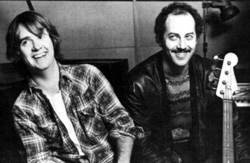 Soft Flower in Spring (1984) was vinyl album #2, released through an independent label
(ITI Records). Featured are Steve Bartlett (bass), Bob Merrihew, now on the drums, BC (trumpet, Memorymoog synthesizer, acoustic
piano) and me (tenor & soprano saxophones, Memorymoog synthesizer, acoustic piano). Bob and I wrote the music for Soft Flower
in Spring. We always composed original music for either on stage or in the studio. Performing other artist's material just did
not appeal to us. Michael Dion (owner ITI Records) was Executive Producer for this album, Lary Nefzger; chief engineer (Triad Studios,
Redmond, Washington), mastering by Kdisc Mastering (Hollywood, California), art director; Vince DeNardo (The Production House) and
photos by Brian Hart. Down Beat critic A. James Liska wrote in the liner notes that "The democratic spirit evident in Soft Flower in
Spring, the second album by the two-some's quartet, reflects a rare cooperative effort in design, direction and detail whose
teamwork is as impressive as the music. Cozzetti & Gemmill share not only in the responsibilities of composing and arranging
(there are an equal number of individual and collaborative efforts contained herein), but in their instrumental duties (both are
keyboardists who share piano and synthesizer responsibilities)."
... read more.
Concerto for Padré and Soft Flower in Spring can both be found being traded on
Ebay, after more than three decades.
We always seem to find that amusing.
Soft Flower in Spring (1984) was vinyl album #2, released through an independent label
(ITI Records). Featured are Steve Bartlett (bass), Bob Merrihew, now on the drums, BC (trumpet, Memorymoog synthesizer, acoustic
piano) and me (tenor & soprano saxophones, Memorymoog synthesizer, acoustic piano). Bob and I wrote the music for Soft Flower
in Spring. We always composed original music for either on stage or in the studio. Performing other artist's material just did
not appeal to us. Michael Dion (owner ITI Records) was Executive Producer for this album, Lary Nefzger; chief engineer (Triad Studios,
Redmond, Washington), mastering by Kdisc Mastering (Hollywood, California), art director; Vince DeNardo (The Production House) and
photos by Brian Hart. Down Beat critic A. James Liska wrote in the liner notes that "The democratic spirit evident in Soft Flower in
Spring, the second album by the two-some's quartet, reflects a rare cooperative effort in design, direction and detail whose
teamwork is as impressive as the music. Cozzetti & Gemmill share not only in the responsibilities of composing and arranging
(there are an equal number of individual and collaborative efforts contained herein), but in their instrumental duties (both are
keyboardists who share piano and synthesizer responsibilities)."
... read more.
Concerto for Padré and Soft Flower in Spring can both be found being traded on
Ebay, after more than three decades.
We always seem to find that amusing.
Timeless
(1994/2010) converted vinyl albums Concerto for Padré and Soft Flower in Spring to compact disc;
digitally remastered
with new graphics. Lary "Larz" Nefzger was our mixing engineer for the latest release, in 2010, and Ashley Shepherd
was mastering engineer (courtesy of QCA). Sweet Dreams (included on the 1994 release) was excluded on the 2010 version. It was
difficult to get all the music onto one CD. We do have Sweet Dreams in .mp3 format available on Music on the Web®
(click here). All graphic art design
has been done by me, ever since the release of Concerto for Padré. As I said, in our 1995 interview with
Evolution TV,
"the art helps me to get ideas for the music and the music helps me to get ideas for the art."
Voyage of the Mummy (2011) is a Rorschach recording
(tapes that had been in storage for more than thirty years). Voyage contains material from our 1977 concert at
Gerdes Folk City,
in Greenwich Village. Midge Pike performs on electric bass, Wes Jensen on drums, Bob on Fender-Rhodes electric piano and me on
my Conn soprano saxophone. On this particular warm summer night, in New York City, we didn't feel like switching instruments. Bob
just wanted to play electric piano and I was perfectly happy to explore the universe with my soprano. Something about the New York
jazz clubs back then, you just felt like taking the music to new levels. We used to record lots of gigs and this was a special one.
Bob Dylan
got his start at Gerdes back in the 1960s. If you like avant-garde jazz (from the 1970s), this album will satisfy your musical tastes.
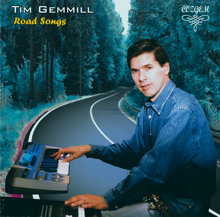 Road Songs (2013) was recorded 'exclusively' in Cozgem Studios. This album is a departure
from the others and has been
referred to as digital jazz.
I like to look at it as just good music; easy listening. All songs (except the J. S. Bach piece) were composed and arranged by me
and/or Bob and I (Red Valley).
Jay kenney
is an exceptional mixing engineer and
Dave Davis
did a great job mastering the album. The mix has very minimal effects and there was no noise reduction applied in the mastering
process. The sound is extremely clean. Our .mp3 files are created from 48khertz 32 bit stereo wave files (high-quality 'digital'
downloads). QCA has been our preferred duplication company, since 1981. This album delves into the world of synthesizers
and electronic music; and digital programmed instrumentation
(MIDI).
Alice Neiley writes in her review August 22, 2014 "Tim Gemmill, an emerging artist, recently released Road Songs,
an unusually solid, soulful album, especially for the electro genre. The tracks move between lengthy, synthesized epics, playful,
funk ridden pieces, and pieces rooted in classical themes and West African instrumentation. To say the least, it's eclectic. To say
the most, it's a life and all its rhythms, it's a heartbeat." ...
read more.
Road Songs (2013) was recorded 'exclusively' in Cozgem Studios. This album is a departure
from the others and has been
referred to as digital jazz.
I like to look at it as just good music; easy listening. All songs (except the J. S. Bach piece) were composed and arranged by me
and/or Bob and I (Red Valley).
Jay kenney
is an exceptional mixing engineer and
Dave Davis
did a great job mastering the album. The mix has very minimal effects and there was no noise reduction applied in the mastering
process. The sound is extremely clean. Our .mp3 files are created from 48khertz 32 bit stereo wave files (high-quality 'digital'
downloads). QCA has been our preferred duplication company, since 1981. This album delves into the world of synthesizers
and electronic music; and digital programmed instrumentation
(MIDI).
Alice Neiley writes in her review August 22, 2014 "Tim Gemmill, an emerging artist, recently released Road Songs,
an unusually solid, soulful album, especially for the electro genre. The tracks move between lengthy, synthesized epics, playful,
funk ridden pieces, and pieces rooted in classical themes and West African instrumentation. To say the least, it's eclectic. To say
the most, it's a life and all its rhythms, it's a heartbeat." ...
read more.
Tim Gemmill
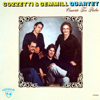 1981: Cozzetti & Gemmill Quartet -
Concerto For Padré (Cozgem Records)
1981: Cozzetti & Gemmill Quartet -
Concerto For Padré (Cozgem Records)
 1984: Cozzetti & Gemmill -
Soft Flower in Spring (ITI Records)
1984: Cozzetti & Gemmill -
Soft Flower in Spring (ITI Records)
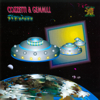 1994: Cozzetti & Gemmill -
Timeless (Rocka Records)
1994: Cozzetti & Gemmill -
Timeless (Rocka Records)
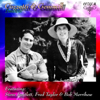 2010: Cozzetti & Gemmill -
Timeless (Cozgem Records)
2010: Cozzetti & Gemmill -
Timeless (Cozgem Records)
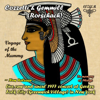 2011: Cozzetti & Gemmill (Rorschach) -
Voyage of the Mummy (Cozgem Records)
2011: Cozzetti & Gemmill (Rorschach) -
Voyage of the Mummy (Cozgem Records)
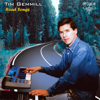 2013: Tim Gemmill -
Road Songs (Cozgem Records)
2013: Tim Gemmill -
Road Songs (Cozgem Records)
|
 Bob Cozzetti and I met my senior year in high school ('67)when I was playing
tenor saxophone & flute in the
Bob Cozzetti and I met my senior year in high school ('67)when I was playing
tenor saxophone & flute in the
 In 1968, Bob and I began to combine our talents as a trumpet, flute & saxophone section for hire. We spent a year in Los Angeles
playing with various rock & roll bands, then moved to Boston, Massachusetts (so we could check out the
In 1968, Bob and I began to combine our talents as a trumpet, flute & saxophone section for hire. We spent a year in Los Angeles
playing with various rock & roll bands, then moved to Boston, Massachusetts (so we could check out the
 In early 1970, we (including Steve Swartz) opted for a more simple approach and formed a three-piece jazz/fusion group;
Music Projection Trio. This collaboration (with no bass player) would come to be a learning experience for us. The absence of bass
(and rotating between trumpet, saxophone & keyboards), gave us a sound all our own. It is worth mentioning, that Bob had become
friends with
In early 1970, we (including Steve Swartz) opted for a more simple approach and formed a three-piece jazz/fusion group;
Music Projection Trio. This collaboration (with no bass player) would come to be a learning experience for us. The absence of bass
(and rotating between trumpet, saxophone & keyboards), gave us a sound all our own. It is worth mentioning, that Bob had become
friends with
 Steve had left Rorschach in New Jersey,
so we had to find a new drummer. It was during this period, that we began to experiment with different musicians. We also decided
to become a jazz quartet. Our bass players were Jeff Fiorini, Bruce Phares or
Steve had left Rorschach in New Jersey,
so we had to find a new drummer. It was during this period, that we began to experiment with different musicians. We also decided
to become a jazz quartet. Our bass players were Jeff Fiorini, Bruce Phares or
 Bob and I found
Bob and I found
 Concerto For Padré (1981) was our first album (on vinyl). It was released under our
own label (Cozgem Records). It features Fred Taylor (drums & percussion), Steve Bartlett (fretless electric bass). BC (trumpet
& acoustic piano) and me (tenor and soprano saxophones, Fender-Rhodes electric piano, acoustic piano). This album was recorded
at Pacific West Recorders March 16, 1981 in Redmond, Washington. Derek du Nann was the mixing engineer and
Concerto For Padré (1981) was our first album (on vinyl). It was released under our
own label (Cozgem Records). It features Fred Taylor (drums & percussion), Steve Bartlett (fretless electric bass). BC (trumpet
& acoustic piano) and me (tenor and soprano saxophones, Fender-Rhodes electric piano, acoustic piano). This album was recorded
at Pacific West Recorders March 16, 1981 in Redmond, Washington. Derek du Nann was the mixing engineer and
 Soft Flower in Spring (1984) was vinyl album #2, released through an independent label
(
Soft Flower in Spring (1984) was vinyl album #2, released through an independent label
( Road Songs (2013) was recorded 'exclusively' in Cozgem Studios. This album is a departure
from the others and has been
referred to as
Road Songs (2013) was recorded 'exclusively' in Cozgem Studios. This album is a departure
from the others and has been
referred to as  1981: Cozzetti & Gemmill Quartet -
1981: Cozzetti & Gemmill Quartet -
 1984: Cozzetti & Gemmill -
1984: Cozzetti & Gemmill -
 1994: Cozzetti & Gemmill -
1994: Cozzetti & Gemmill -
 2010: Cozzetti & Gemmill -
2010: Cozzetti & Gemmill -
 2011: Cozzetti & Gemmill (Rorschach) -
2011: Cozzetti & Gemmill (Rorschach) -
 2013: Tim Gemmill -
2013: Tim Gemmill -